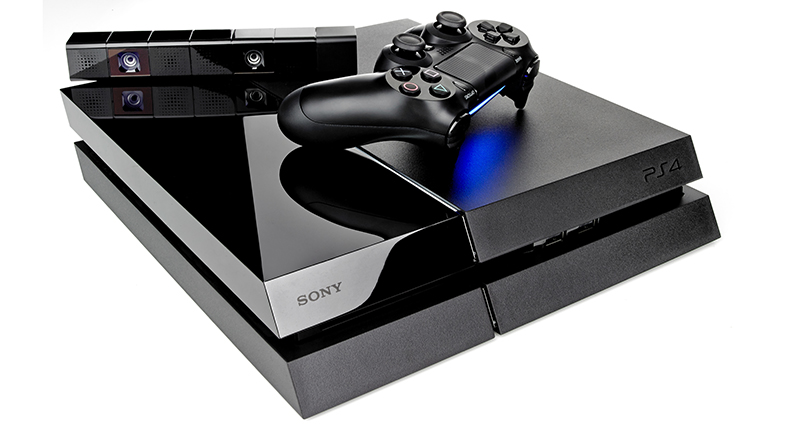What Hi-Fi? Verdict
Next-gen gaming is a glorious reality but you’ll have to make do without some last-gen features
Pros
- +
Games look and sound great
- +
Good selection of non-game apps
- +
Decent AV performance
Cons
- -
No CD or DLNA support
- -
Not as good as a dedicated disc player
Why you can trust What Hi-Fi?
The Sony PlayStation 4 has had a long, healthy life on the market - nearly seven full years as of this writing. But the next big thing is nearly here: the PlayStation 5 releases in November.
No doubt, the PS4 will still see new games releasing for years to come, especially given that there are more than 112 million of them sitting in homes right now. But should you bother snagging a PlayStation 4 - or rather, the current PS4 Slim model - right now with the next generation just around the corner?
Unboxing video
More than a games console?
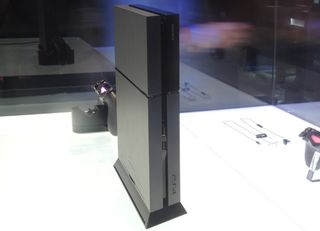
Much of the initial talk around the PlayStation 4 and rival Xbox One concerned their role as all-singing, all-dancing entertainment hubs, ready to take centre stage in your living room and your AV system.
However, in the months before launch, Sony took a step back from this, suggesting the PS4 is in fact “for the players” – a games console first and, indeed, second.
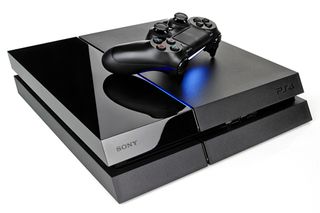
Microsoft kept on the home entertainment tack, making much of the Xbox One’s TV integration and the addition of a Blu-ray player. However, as our original Xbox One review revealed, the console was far from the finished article right out of the gate.
Sony, of course, already made this play for the home entertainment market with the PlayStation 3, propelling itself into AV hearts and minds by being one of the very first Blu-ray players, while also offering a host of other disc and network playback options.
So, does the PS4 carry on where the PS3 left off? Or is it games over features to the detriment of the wider home entertainment functionality? Let’s find out…
Build and design
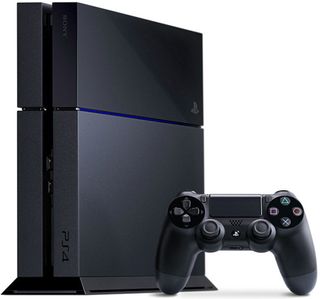
The PlayStation 4 design looks more like the PS2 than the PS3 – “a PS2 on the wonk” is how we described it in our unboxing video – but it’s certainly more compact and generally easier on the eye than the black block that is the Xbox One.
The angular edges, touch-sensitive front buttons and glowing blue power strip make for a suitably next-gen appearance.
It can stand flat or upright, though you’re advised to use the official stand if you want to place it vertically. It’s an optional extra, despite being pictured on the box.
What is inside the box is one of the new DualShock 4 wireless controllers (but no DualShock charging cradle), a mono headset (a cheap-looking earbud), an HDMI cable, USB cable and a power cable.
Unlike the Xbox One, the transformer is integrated inside the PS4, so there’s no need to worry about finding a home for a hefty external power block.
Specs
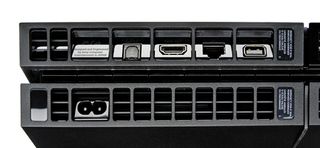
The PS4’s connections come in the form of an HDMI and a digital optical output, two USB 3.0 inputs and an auxiliary connection for the new PlayStation Camera (an optional accessory for around £60).
There’s an ethernet connection too, though the PS4 also has built-in Wi-Fi. There are no analogue connections, however – an omission that raised some eyebrows at launch.
Talking of which, much of the muttering in the What Hi-Fi? offices has centred on the slot-loading DVD/Blu-ray drive, which gives us the first sign that the PS4 really isn’t looking to please all of the people all of the time in the way that the PS3 did.
It will happily play PS4 games, Blu-ray discs and DVDs, but the drive won’t play 3D Blu-rays or CDs. Strange but true.
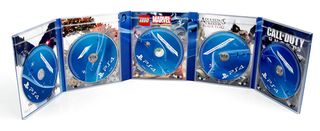
There’s also no DLNA streaming – another feature present on the PS3 – nor is there support for streaming Bluetooth audio or generally playing your digital music collection.
So while the original PlayStation, the PS2 and the PS3 all jumped aboard the disc of choice at the time (CD, DVD and Blu-ray respectively), it seems Sony doesn’t see the 3D Blu-ray, or streaming your own personal audio, as worth including. In hindsight, it looks like they were probably right on 3D Blu-rays...
Apps and features
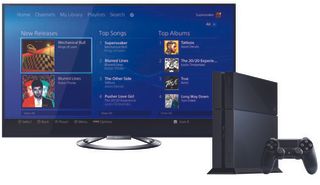
Why did Sony take that tack? Well, there are two obvious reasons: the first is the gaming focus we mentioned earlier, and the second is that Sony would rather you used the PS4’s apps for streaming music and video, mainly Sony Music (monthly subscription) and Video Unlimited (pay-as-you-go).
There are other apps for music and video available from the PlayStation Store too, such as BBC iPlayer, Amazon Prime Video and Netflix, for example. It’s just your own media that’s harder to get on to the console.
The PS4 comes with 500GB storage – and you can upgrade this by replacing the internal hard disk – but this is mainly for storing games.
It’s a sign of the times that even a console that puts gaming front and centre still offers all sorts of extra entertainment. The PlayStation Store sells apps, movies, TV shows and access to Music Unlimited, as well as games, and there’s an internet browser and Facebook integration too.
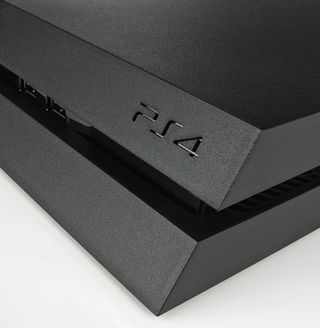
This carries over in to the PlayStation network, pulling through your real name, pictures and friends, should you so desire.
Navigation is essentially through two rows of icons. The top one provides access to what Sony presumably sees as the most crucial aspects of the experience.
It’s something of a mish-mash, combining standard shortcuts to settings and your profile with icons for your PlayStation gaming ‘trophies’, messages, notifications and a link to the PlayStation Store.
Drop down a level and your games and apps appear in order of most recently opened. Move along the row and additional information for each appears below in a series of tiles.
These can take a second to load, whereas the interface itself is nice and nippy. It’s a ‘Dynamic Menu’, no less, and it looks smart. Jumping between open apps – iPlayer to gaming, say – will take 10 seconds or so, which while understandable can’t help but feel like a delay compared with the multi-tasking experience on smartphones and tablets.
Control

While Microsoft made a big play of the Kinect system, which came bundled with the original Xbox One, your first port of call for controlling the PS4 will be the standard controller, the DualShock 4. It’s a big improvement on its predecessor.
It feels more comfortable; the grips are a little bigger and seem more ergonomic, fitting nicely in the hand. The triggers seem more accurate and can do more too, with a greater range of control.
At the top of the controller is a new touch-pad. At launch this doesn’t seem to offer too much, and ultimately most games haven't made any significant use of it.
There’s also a light panel on the top edge of the pad. This changes colour to identify different characters, and is also used to track player movement.
MORE: PS5 vs Xbox Series X
The new PS4 controller also has a standard headphone jack. The bundled mono headset takes the form of a single earbud, so don’t get too excited by that, but the good news is you can connect any pair of headphones to hear PS4 audio, immediately overriding the PS4’s soundtrack.
Sound quality is decent using this method, but it's well worth upgrading to the Platinum Wireless Headset if you're able, as it boasts excellent sound quality and dedicated 3D audio for a handful of games. The PS5's Pulse headset is set to take this 3D audio concept a step further.
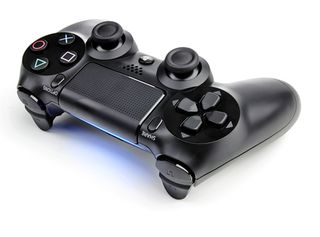
Another control option is the PlayStation App, which lets you connect your smartphone (Android or iOS) and enjoy some second-screen action on certain games, while also allowing you to enter text on the PS4 using your mobile.
Sure enough, this proves better than the PS4 on-screen keyboard at entering addresses in the web browser. The internet browser itself is fairly easy to use using the dual sticks to move the cursor, although Flash videos won’t play and jumping around links on a page is still a little clumsy.
The PS Vita can connect for handheld gaming of your PS4 titles, too, although there are very few Vitas around now and they're no longer on sale.
PlayStation Camera
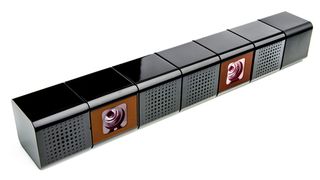
The PlayStation Camera, which is used for voice and gesture controls, isn’t included in the box but rather an optional accessory (yours for around £60).
It’s a lot smaller than the new Kinect, which Microsoft aims to make more integral to the Xbox experience – hence it’s bundled with the console – and in reality a lot less impressive.
An app, The Playroom, feels rather shoe-horned in to the PS4 experience as an effort to show off what the Camera can do and essentially it’s simply some neat but quickly fairly dull augmented reality.
There are limited voice commands, too, but no gesture control – and it feels similar to smart TVs, fairly effective but unlikely to replace the hard control for most people.
Still, it’s easy to be jaded about technology that is potentially incredibly clever and powerful. Ultimately, the PlayStation Camera has best been put to use with the PlayStation VR headset, which requires it to track the device sitting on your dome.
DVD and Blu-ray
So, it won’t play 3D Blu-rays or CDs. But how does it perform with what it can play? More than adequately – but not a patch on a dedicated player. It gives away sharpness, dynamic colour and overall detail.
Motion isn’t handled quite as smoothly either. Our PS4 could also be a little noisy in operation, too.
But in isolation the picture is perfectly watchable. There’s little sign of noise, colours are presented faithfully and the level of insight is adequate. DVD pictures are less impressive.

The drop in quality is obvious, but the difference between DVDs on the PS4 and a dedicated machine are more obvious. Again, there’s nothing too off-putting, but lines are softer and there’s a drop in detail.
Sonically, it sounds a little less substantial, too.
It can output high-def Dolby Digital and DTS 5.1 soundtracks via HDMI or digital optical, but you don’t get the same power and weight to heavy-hitting effects when watching bombastic blockbusters such as Pacific Rim, nor are voices as expressive – even if dialogue is perfectly clear.
Again, it’s a trade-off for the extra features but if this will be your main disc-spinner, it’s a good budget player and no more.
Sony’s Music Unlimited service works pretty nicely. There’s an extensive library and a fast, neat interface.
The bit-rate is now thankfully up to 320kbps, to match the likes of Spotify, and it sounds fine as streaming music goes. Background audio from Sony Music Unlimited is a neat touch (you need to pay your £10/month for any of this of course) and, unlike the Xbox One, you can adjust your music volume level and game audio level separately.
We found having both a bit distracting and messy but clearly for other PS4 tasks having music playing is neat.
Games

Of course, it’s in the gaming arena where the PlayStation 4 comes into its own.
Over the course of the generation, Sony has made the PS4 the must-have console of this generation by both publishing loads of essential first-party games and recruiting top partners to release their best exclusives for PS4.
From The Last of Us Part II to God of War, Spider-Man, and Horizon Zero Dawn, Sony's first-party releases have consistently put Microsoft's weak current-gen stable to shame.
And from Red Dead Redemption 2 to Persona 5 and The Witcher III: Wild Hunt, there's been no shortage of amazing games from other developers. The PS4 library is absolutely stacked, top to bottom, with huge full-bodied games, delightfully quirky indie games, and everything in between.
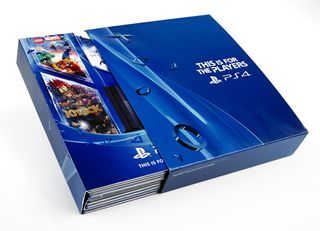
Verdict
Sony has been clever with the PS4. Gaming is the theatre in which it wants to win the next-gen console battle, and after all these year, that's been its biggest advantage over the Xbox One.
It’s undoubtedly the PS4’s strongest string, which may be no great surprise, but with all the talk of the wider home entertainment capabilities of such devices, is no longer a given.
Neat integration of catch-up TV and streaming music and movie apps is good too (and indeed practically a necessity), but there’s no denying that some of the holes in the wider spec sheet are big and disappointing.
The PS4 has already sold by the bucket load and will no doubt continue to do so – and for arguably the best all-round gaming experience around, we don’t disagree with those stumping up the cash.
If you're not keen on shelling out for an expensive next-gen console and its pricey launch games, then you're sure to have a great time with the PlayStation 4. It has loads of brilliant games and stellar entertainment capabilities, and is now available at a lower price than at launch. Game on.
MORE:
PS5 vs PS5 Digital Edition: which should you buy?
PS5 Digital Edition vs Xbox Series S: which all-digital console is better?
What Hi-Fi?, founded in 1976, is the world's leading independent guide to buying and owning hi-fi and home entertainment products. Our comprehensive tests help you buy the very best for your money, with our advice sections giving you step-by-step information on how to get even more from your music and movies. Everything is tested by our dedicated team of in-house reviewers in our custom-built test rooms in London, Reading and Bath. Our coveted five-star rating and Awards are recognised all over the world as the ultimate seal of approval, so you can buy with absolute confidence.
-
Gummibando ReplyWhat Hi-Fi? said:The PS5 is nearly here - should you still bother buying the current-gen system?
Sony PlayStation 4 : Read more
The PS4 indeed does supports DLNA. You just have to install the free "Media Player" application from the PlayStation Store. The app supports playback from USB media as well.
Image below shows "Asset UPnP" DLNA Server running on my NAS.
1617
